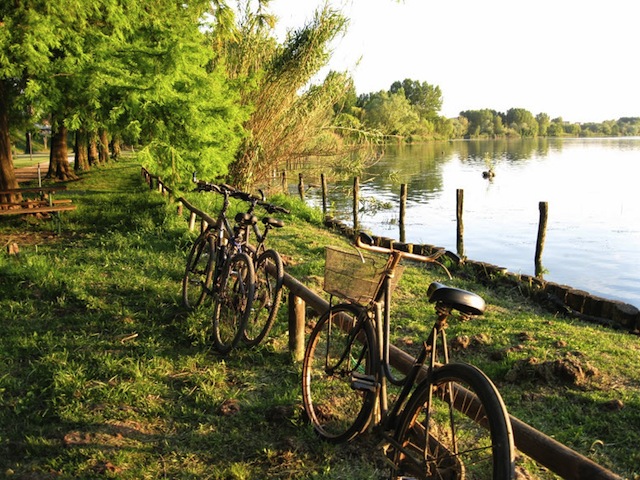Charmed by the monuments, by the rushes along the river Mincio, by the lotus flowers, by the unreal atmosphere enveloping every street and square, by the history and by the farmers’ spontaneity, English author Aldous Huxley called Mantua ‘the most romantic town in the world’.
Along with more communication specialist gathered by Can’t Forget Italy, we had the privilege to enjoy a multisensorial tour through this North Italian town and the land surrounding it. Neighbouring villages as Sabbioneta, another destination renown for its artistic value.
The legend says Mantua was founded by the Greek seer who named it, but it is safer to think the name comes from Etruscan goddess Mantu. To the noble Gonzaga family – Mantua’s dukes since 1328, we own the incredible artistic life of the town and its transformation. Among the many artists contributing to Mantua’s prestige there are Andrea Mantegna and Leon Battista Alberti, who designed the new Church of Saint Andrew and the Saint Sebastian Temple on Te island. In front of the temple the magnificent Palazzo Te was built, a magnificent Renaissance villa intended for the pleasure of prince Federico II Gonzaga.
Palazzo Ducale is another prestigious residence of the Gonzagas, an impressive mansion comprising more than 500 rooms and including several buildings built in different eras around Piazza Sordello. The Castle, the Domus Nova and the Church of Saint Barbara are all wonderful works, but the masterpiece is Andrea Mantegna’s Camera degli Sposi (‘bridal chamber’).
During a rehearsal of ‘Omaggio a Puccini’ we visited the Bibiena Academic Theatre. Inaugurated in 1769 by architect Antonio Galli Bibiena, it hosted a concert held by a then 14-year old Wolfgang Amadeus Mozart. A delightful sight for visitors, the theatre is considered the most accomplised example of Rococo theatrical architecture.
Great joy was expressed on our arrival in Sabbioneta, a treasure chest filled with many wonders and called among the locals ‘Little Athens’. The town looks like a small independent state, with an hexagonal fortress edified built 1556 and 1591 by Vespasiano Gonzaga Colonna.
The Palazzo Ducale‘s wooden ceilings are really remarkable, as well as Vincenzo Scamozzi’s Teatro all’Antica, the first stable theatrical building in modern era. And then came Sabbioneta’s synagogue, restructured around 1824 and witness of a lively jewish community which found favourable conditions under the Duke’s liberal regime.
In the surrounding area there are many ancient oratories and abbeys, but also charming little farms which highlight the recovery enacted on the fields by the monks during the centuries. The best way to enjoy their sight is by bicycle, moving along the Mincio’s riverbanks. The feeling can be only described as ancient and quite pleasantness of bucolic memory.
Charls Dickens, hit by some kind of decadent abandon, sung the praises of the cane and reed lakes. His words lulled my mind during our cruise over the Mincio, while the gazes stretched through the fluvial vegetation, over the green fields, the rural reddish buildings, and the many locals standing on the riverbanks, offering smiles and kind gestures.
I hope many will find interest in our special experience and will come to discover Mantua and its lands on their own. They will taste the magic aura of mysterious happiness one only feels after a fulfilling experience. The kind of experience we had in Mantua.









